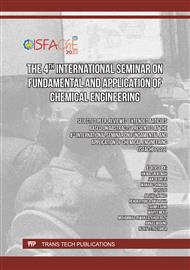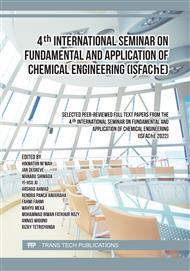p.3
p.13
p.21
p.27
p.33
p.51
p.71
p.79
Resistance of Paecilomyces variotii Mold Ascospores to Dense CO2 and Dense CO2- Assisted Thermal Processing
Abstract:
Paecilomyces variotii is one of the heat-resistant fungi that causes spoilage problems, especially in processed fruit products. Many non-thermal methods have been tested for their efficacy to inactivate spoilage and pathogenic microorganisms. The objectives of this study were to use dense CO2 (HPCD) and their combination with thermal processing at 50-90oC to reduce the population of P. variotii mold ascospores in orange juice. Application of dense CO2 between 0.4 to 0.8 MPa for 30 min only reduced <1.0 log of these spores. The highest log reductions achieved (2.24 log) were shown by sequential treatments of 0.8 Mpa pressurized CO2 for 30 min followed by 90oC-30 min thermal processes. Soluble solid content (10-30oBrix) affected the spore reduction by dense CO2-assisted thermal processing, being higher at lower oBrix. These results indicate that P. variotii mold ascospores were highly resistant to these treatments. Increasing the pressure of HPCD treatment might improve the log reductions required for food pasteurization.
Info:
Periodical:
Pages:
27-32
Citation:
Online since:
January 2024
Authors:
Price:
Сopyright:
© 2024 Trans Tech Publications Ltd. All Rights Reserved
Share:
Citation:



